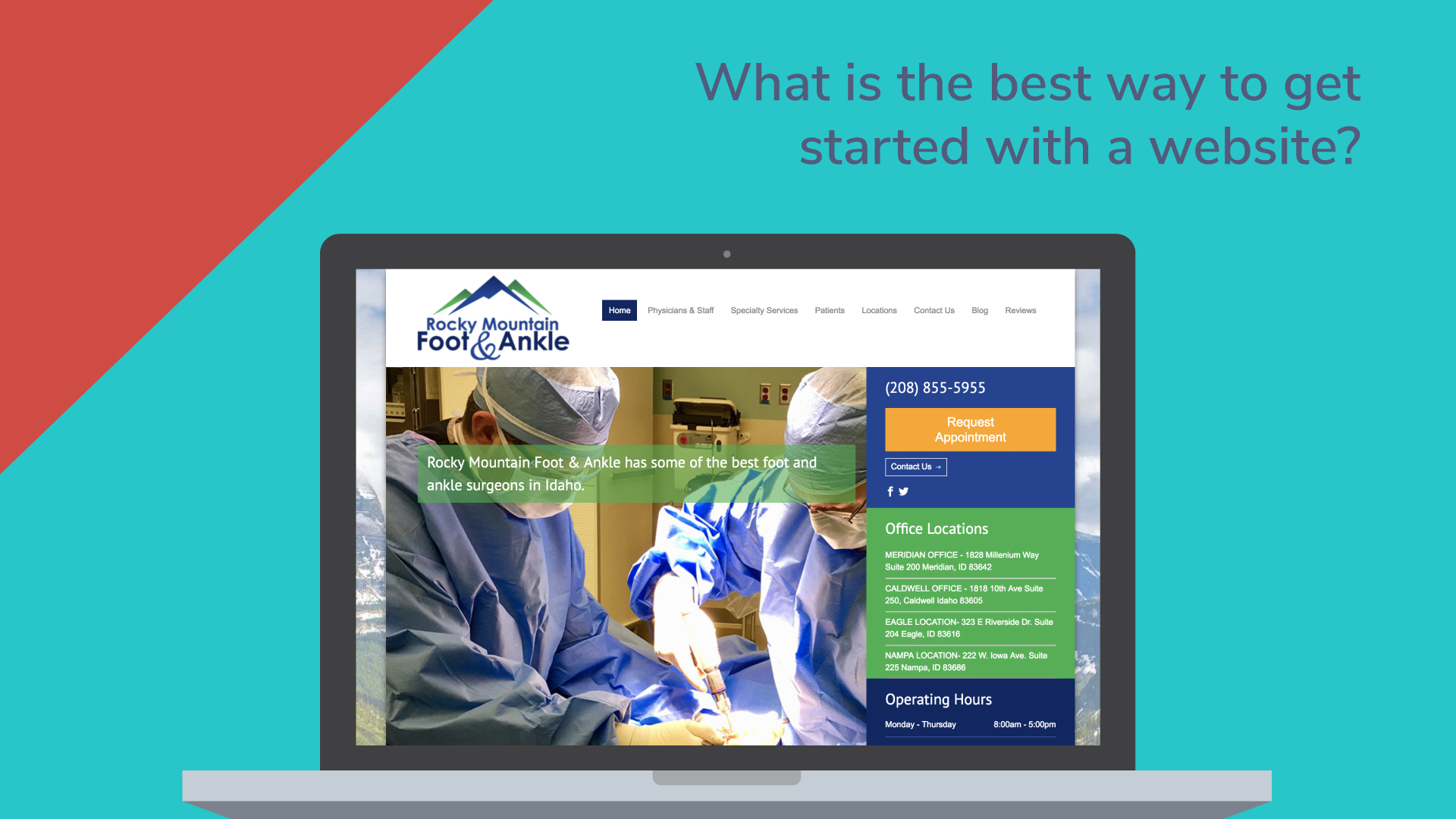This is one of hundreds of videos where I answer the most commonly asked questions that small business owners have about their website. Today’s question is, “What’s the best way to get started on your small business website?” It’s a great question. If there’s going to be an end, there has to be a beginning and this is where you start your website, “With a purpose!”
Best Way to Start a Website
What is the purpose of this website? Is it to retain clients? Is it to get new clients, or maybe if someone Google’s you, you just want to show up! That would be nice. There’s a variety of purposes that you can choose with your website so you really need to sit down and say, “I’m creating this website, what is it that I wanted to do?”
Pick 10 common questions your potential customers might have and begin to answer those questions on your homepage. This will create a sense of trust and authority with your visitors and provide them with the information they are seeking right away.
In addition to providing answers, it’s also crucial to have a clear call to action (CTA). You want visitors to know what you want them to do next. Whether it’s signing up for a newsletter, calling you directly, or reading an informative article, your CTA should be prominent and persuasive. A well-placed CTA can significantly increase conversions and help guide potential clients through the decision-making process.
Now, shifting gears to another important question: “What’s the best way to get started on your small business website?” This is a fantastic question. If there’s going to be an end, there has to be a beginning, and this is where you start your website: with a purpose!
What is the purpose of your website? Is it to retain clients? Is it to attract new clients? Or maybe, if someone Googles your business, you just want to show up in the search results. There are various purposes you can choose for your website, so it’s vital to sit down and clearly define what you want to achieve.
Here’s a big secret that not many small businesses know about their websites: when people visit a website, they usually have a question that needs an answer. This is where focusing on providing solutions becomes crucial. Instead of merely listing all the services you offer—which are important in their own right—focus on answering the questions your target audience may have.
When potential clients land on your website, they should quickly find the answers they need. This not only enhances the user experience but also keeps them engaged, encouraging them to explore more of what your business offers. For example, if you own a landscaping business, some of the questions you might consider addressing include:
- What types of landscaping services do you provide?
- How can I maintain my garden throughout the year?
- What are the costs associated with landscaping services?
- How do I prepare my yard for seasonal changes?
- Do you offer any guarantees on your work?
By addressing these questions on your homepage, you’ll create a valuable resource for visitors and demonstrate your expertise in your field.
Additionally, ensure that your website is visually appealing and easy to navigate. A cluttered or confusing layout can frustrate visitors and lead them to leave your site. Use clear headings, concise paragraphs, and high-quality images to make your site inviting and user-friendly.
It’s also essential to optimize your website for search engines. Good SEO practices will help your site rank higher in search results, making it easier for potential clients to find you. This includes using relevant keywords throughout your content, optimizing images, and ensuring your site loads quickly.
Lastly, don’t forget to consider mobile users. With a significant portion of web traffic coming from mobile devices, having a mobile-friendly design is crucial. A responsive website adjusts its layout based on the device being used, ensuring an optimal viewing experience whether on a desktop, tablet, or smartphone.
In summary, creating a small business website involves understanding its critical parts, defining its purpose, providing valuable answers to potential customer questions, having clear calls to action, and ensuring a user-friendly and optimized design. By focusing on these elements, you’ll be well on your way to developing a website that not only attracts visitors but also converts them into loyal clients.





0 Comments